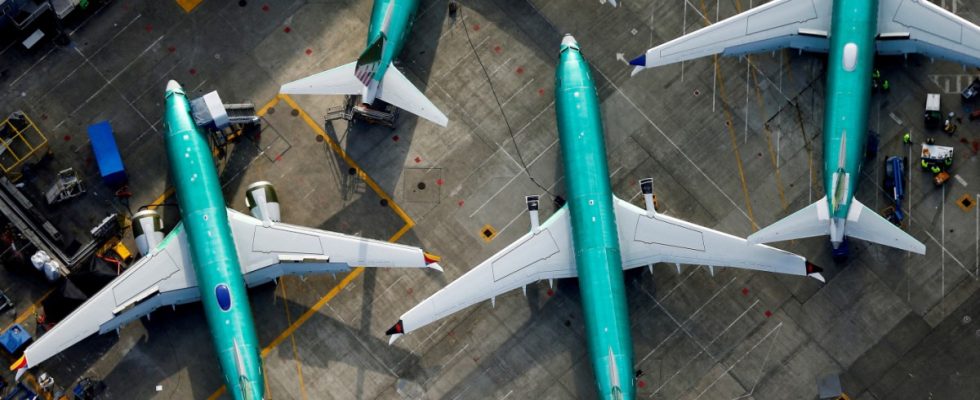It was just a week ago that Boeing once again reorganized its management. Nothing has changed at the top, David Calhoun continues to lead the entire group and Stan Deal is responsible for civil aircraft. What is new, however, is a program manager and a senior quality supervisor who will monitor assembly more closely. They are intended to prevent production errors like the one that caused a Boeing on January 5th from occurring again 737 Max A part of the fuselage detached from Alaska Airlines in flight.
But Boeing wouldn’t be Boeing if there wasn’t the next drama after a few days, and this time it’s about more than a few personal details for a better image. A group of experts commissioned by the US Congress has now presented its report on the safety culture at Boeing, and it comes to some damning conclusions. Even almost five years after the second crash 737 Max According to the report, the company has still not taken any action that goes far enough to significantly improve safety and corporate culture. An example: The internal procedures still do not prevent employees from having to fear for their jobs or careers if they point out grievances.
In October 2018 and March 2019 there were two Boeing 737 Max Lion Air (Indonesia) and Ethiopian Airlines crashed, killing a total of 346 people. As it turned out, Boeing had installed a new flight control system without disclosing this. The system – called the Maneuvering Characteristics Augmentation System (MCAS) – intervened in certain flight attitudes unnoticed by the pilots and pushed the nose of the aircraft downwards. The system was later defused. The Maxseries was not allowed to fly worldwide between March 2019 and December 2020. But the focus is also on a corporate culture that was one-sidedly focused on maximizing profits at the expense of safety, in which employees were under great pressure to stick to schedules, even if the aircraft were ultimately not fully developed.
The expert group is very heterogeneous. It consists of employees from the Federal Aviation Administration (FAA), unions, scientists and airline representatives. They dug through more than 4,000 pages of internal Boeing documents and conducted around 250 interviews. One of the main points of criticism: Although Boeing’s top management promises change, the old, wrong and ultimately dangerous mechanisms are still at work at the working level. There is still enormous pressure to deliver aircraft on time, and when deficiencies in production threaten to prevent this, they are somehow quickly eliminated instead of addressing the root causes.
The focus is primarily on the approximately 1,000 Boeing employees to whom the FAA addresses important approval issues for new aircraft variants such as the Max has delegated. Even after this system was changed as a result of the crashes, these engineers still do not have the necessary protection to demand technical changes without fear of personal consequences. The report also criticizes that the pilots’ perspective was not sufficiently taken into account in aircraft development and that this could have consequences for safety. In every aircraft project, however, the role of the chief pilot must be significantly upgraded, this is one of around 50 recommendations that the committee has put together.
Overall, the paper reads like the analysis of a company that took a wrong turn without realizing it and, even after years of deep crisis, doesn’t know how to get back on the right path. But perhaps the committee’s instructions will help: Boeing now has six months to evaluate the report and must then submit a plan to the FAA as to how and when the individual problems can be corrected.
Will it be Calhoun and Deal who will drive Boeing’s transformation? So far they have mainly attracted attention with beautiful words. In the industry, however, a change at the top is long overdue.

